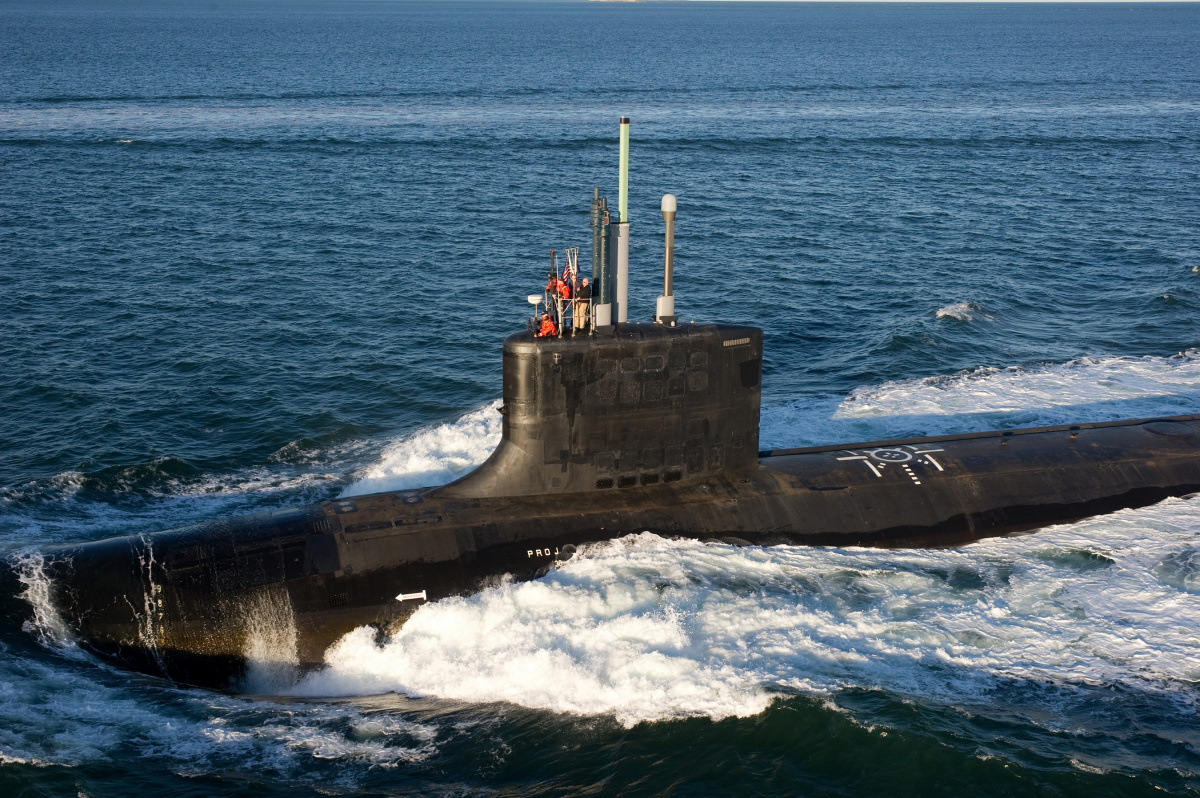From National interest quoting British study. With the proliferation of new sensor like SQUID, LIDAR, underwater communication, gliders, automatic sonobuoy, cheap HALE UAV, hiding is becoming more difficult
The U.S. Navy's Nuclear Submarines Could Be Made Obsolete
September 25, 2017
On a more human level, it would be interesting to go back in time to World Wars I and II, where a constant refrain of the sailors and airmen who hunted subs was the sheer tedium of the search. Hour after hour after hour of scanning the oceans, in the hope that a needle in the haystack would reveal itself as a sonar contact or a tiny periscope peeking above the surface. If nothing else, farming out sub-hunting to the robots will make chasing subs a bit less dull.
Submarines can run—but they can't hide—from drones.
That's the contention of a new report by a British think tank, which argues that the growing numbers and sophistication of drones are depriving submarines of their stealthiness.
The , authored by science journalist David Hambling for the British American Security Information Council, was written as a briefing paper for Britain's Parliament, which must consider whether to modernize or scrap the UK's Trident nuclear missile subs.
The report points out the century-old method of hunting subs is changing:
"In the past, antisubmarine warfare (ASW) has been carried out by a small number of highly capable ships and manned aircraft. Their task has been like that of a handful of police looking for a fugitive in a vast wilderness. Lacking the manpower to cover the whole area, they have to concentrate their forces on the most likely paths and hideouts, and hope for a lucky break."
Now, highly expensive subs must contend with an expanding array of cheap robot sub-hunters that can blanket the ocean, sort of in the same way that German U-boat "" ganged up on Allied convoys in the North Atlantic. These include small handheld drones that the U.S. military is designing to operate in swarms, air-launched drones like the U.S. that can be dropped by ASW aircraft, and sonar-equipped underwater robot gliders that quietly search the ocean.
"Small unmanned platforms can carry many types of sensors active and passive sonar, magnetic anomaly detectors, wake detection LIDAR, thermal sensors, laser-based optical sensors capable of piercing seawater and others," Hambling writes. "A submarine which can be seen by any one of these will cease to be invisible. A submarine whose location is exposed is highly vulnerable to instant attack. If submarines are easily detectable, they lose all their advantages as strategic weapons platforms."
Drones versus subs is essentially an arms race, a contest between an expensive but fragile weapon pitted against hordes of cheap sensor and weapons platforms. It parallels the race between the development of stealth aircraft, and the development of sensors to detect them.
Unfortunately for the subs, it's not an equal contest. A U.S.
Virginia-class attack submarine costs nearly $3 billion: a small unmanned aircraft might cost $5,000, and a swarm of thirty drones just $150,000. The drone isn't as capable as the sub, but that's not the point. Nuclear missile submarines have always been considered the invulnerable backbone of a nation's nuclear force, able to hide in the ocean unlike land-based ICBMs or bombers. If the United States, Russia, China, Britain or France—not to mention Israel—fear that their ballistic subs are vulnerable to a surprise drone attack, this could make decision-makers much more ready to pull the trigger in a crisis.
On a more human level, it would be interesting to go back in time to World Wars I and II, where a constant refrain of the sailors and airmen who hunted subs was the sheer tedium of the search. Hour after hour after hour of scanning the oceans, in the hope that a needle in the haystack would reveal itself as a sonar contact or a tiny periscope peeking above the surface. If nothing else, farming out sub-hunting to the robots will make chasing subs a bit less dull.
Either way, antisubmarine warfare will never be the same. "The oceans are becoming a 'sensor rich' environment full of drones, with eyes and ears everywhere," writes Hambling. "This will leave no hiding place for submarines."
Michael Peck is a contributing writer for the National Interest
. He can be found on and .
: Wikimedia Commons/U.S. Navy.

